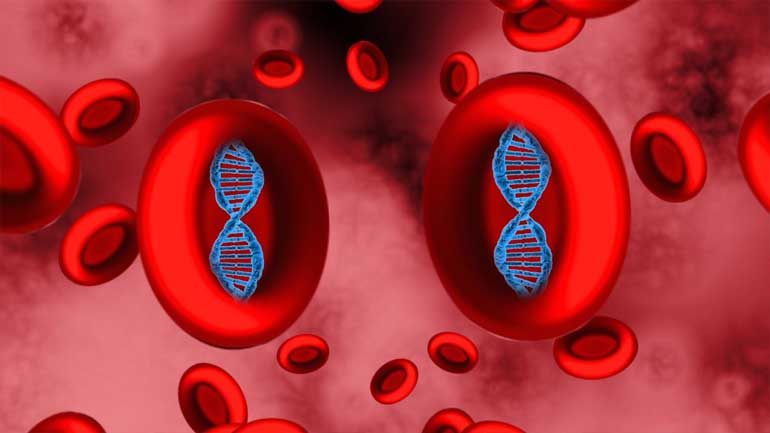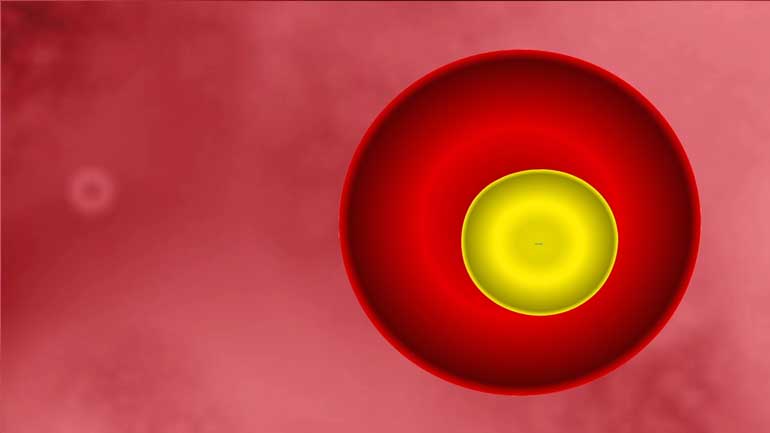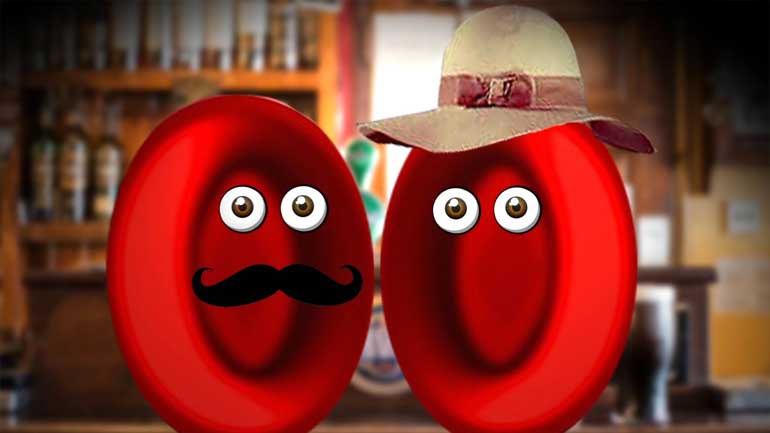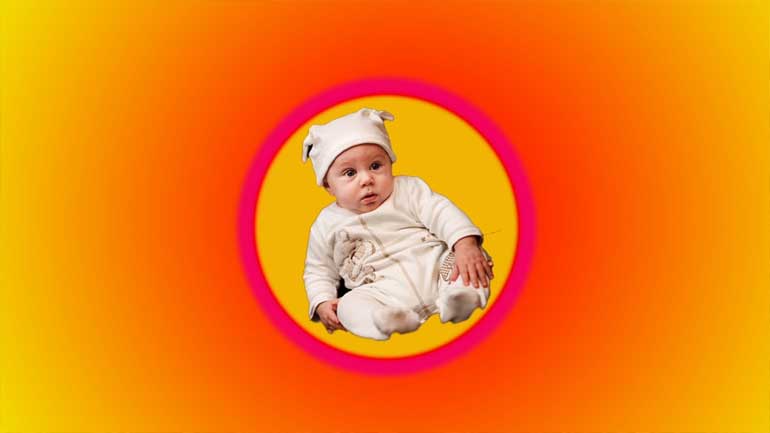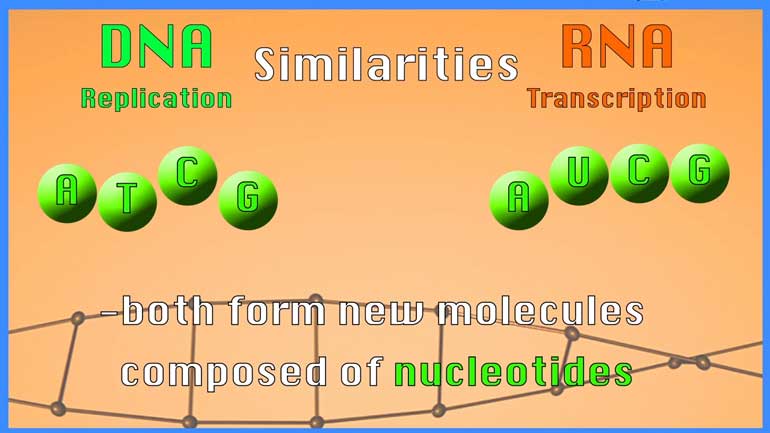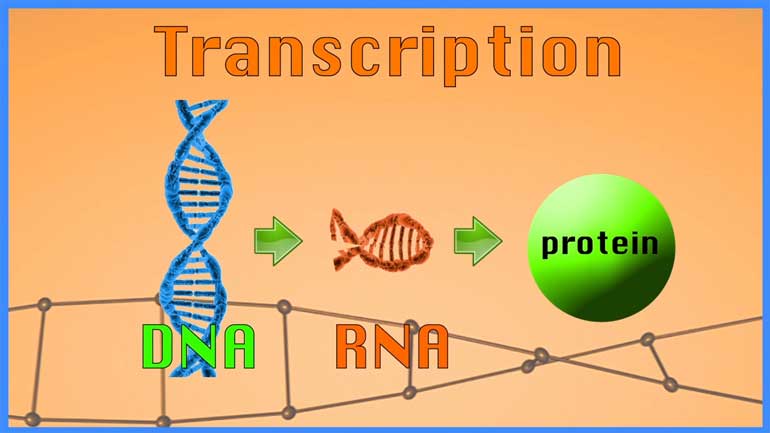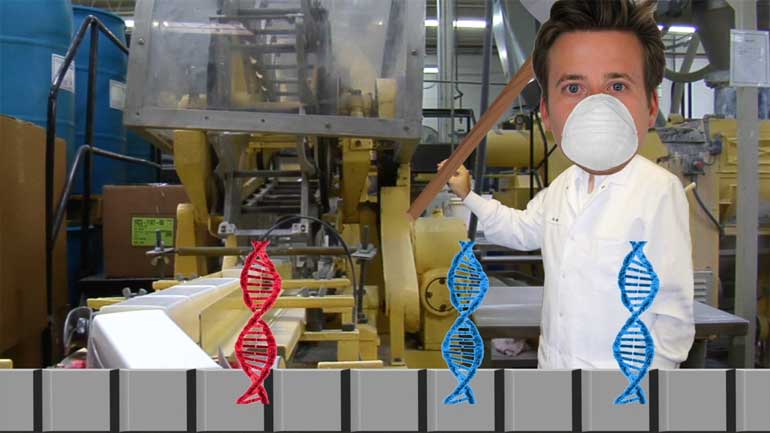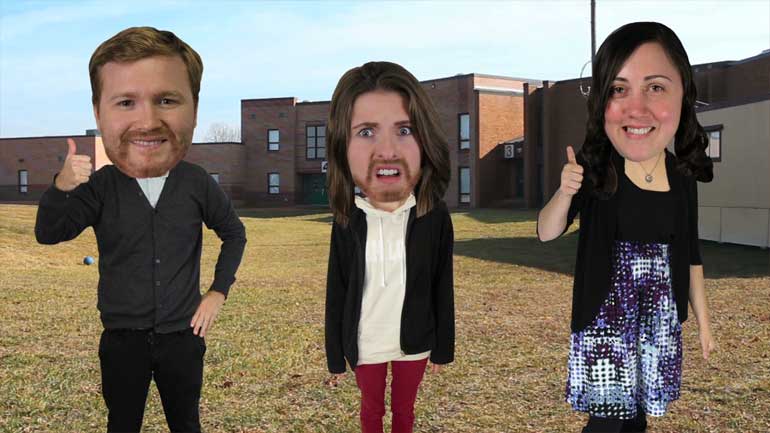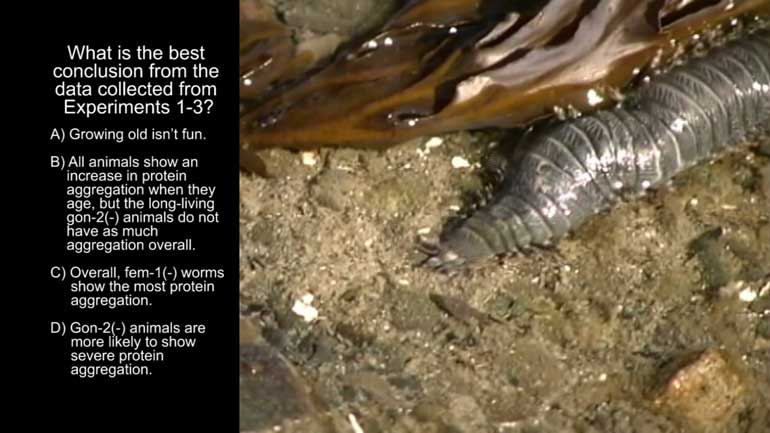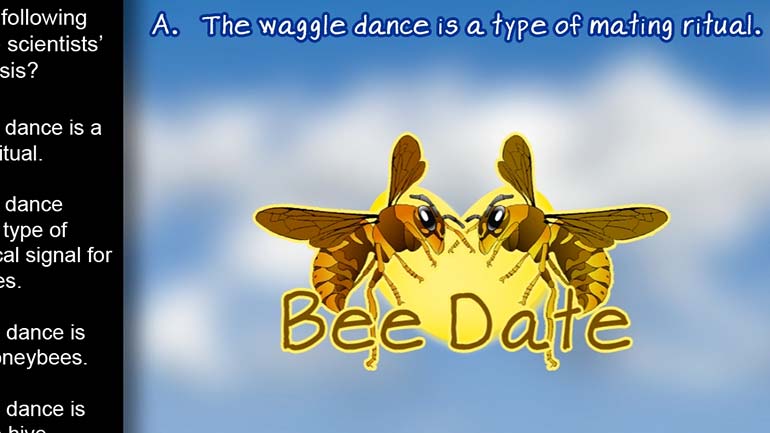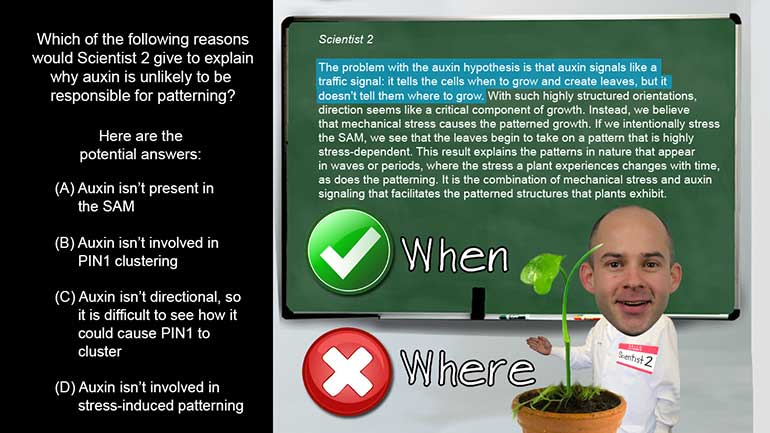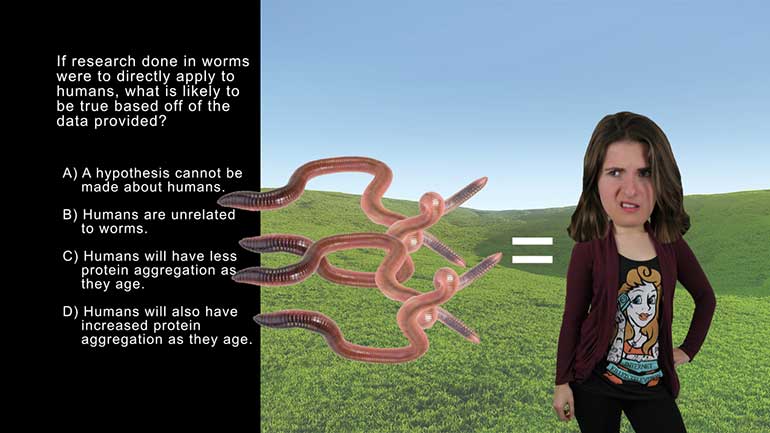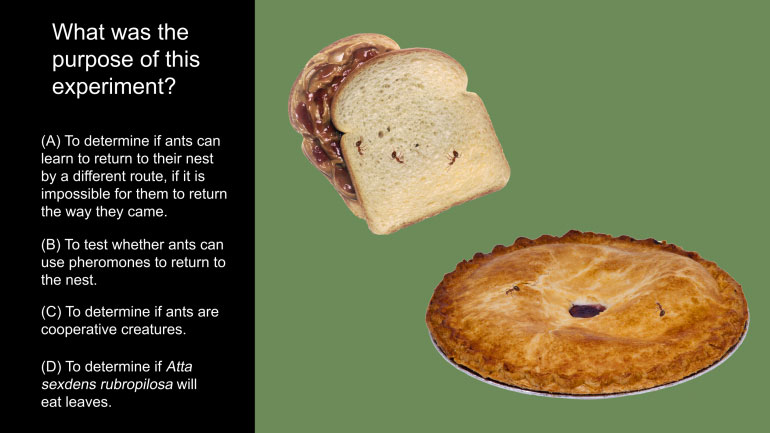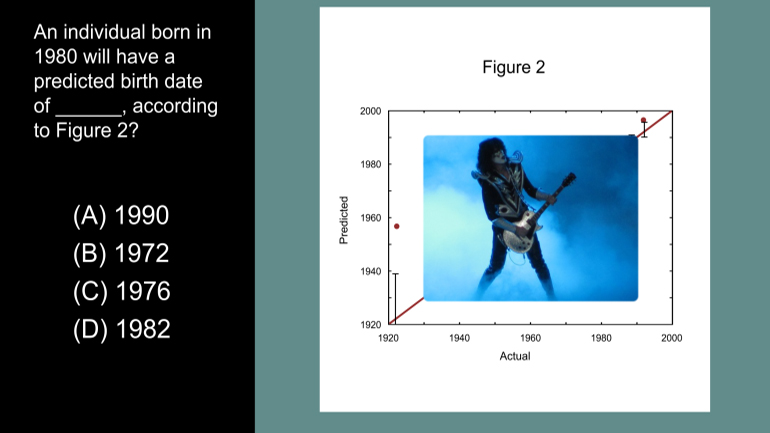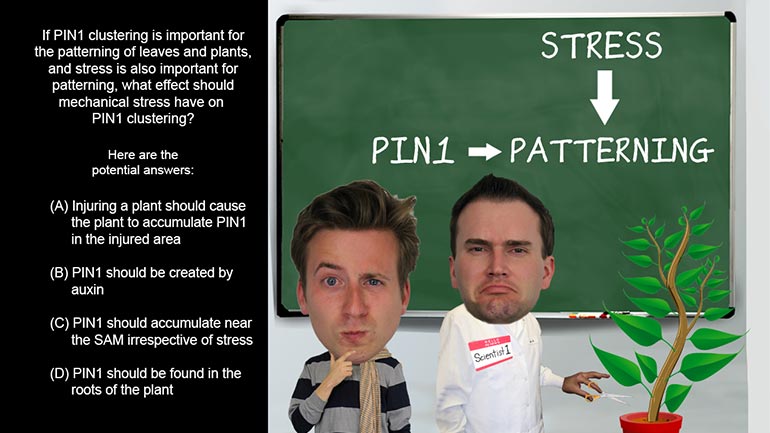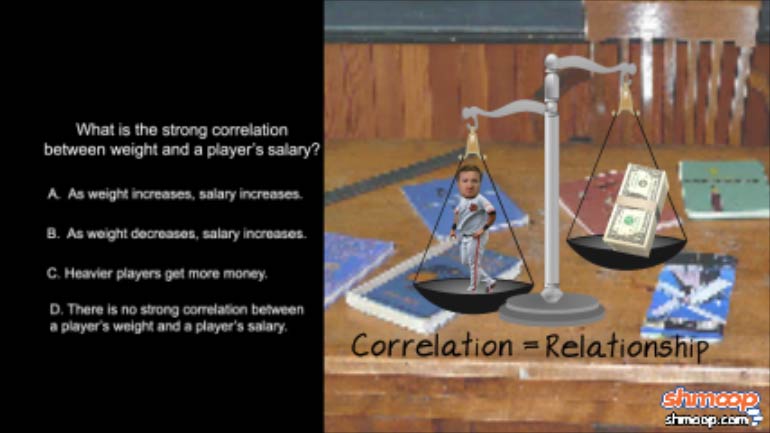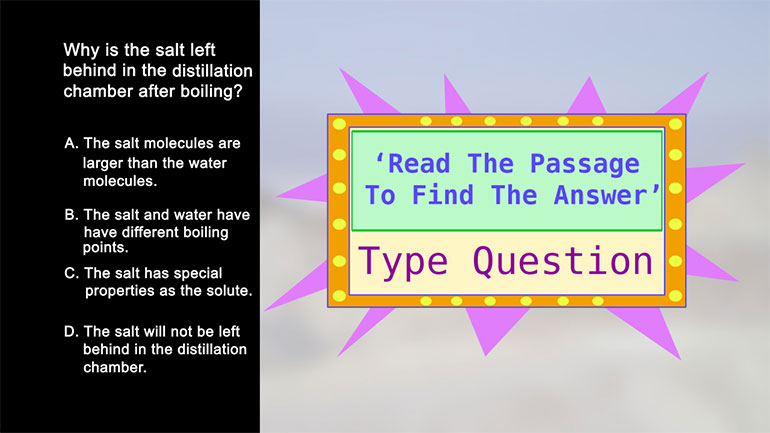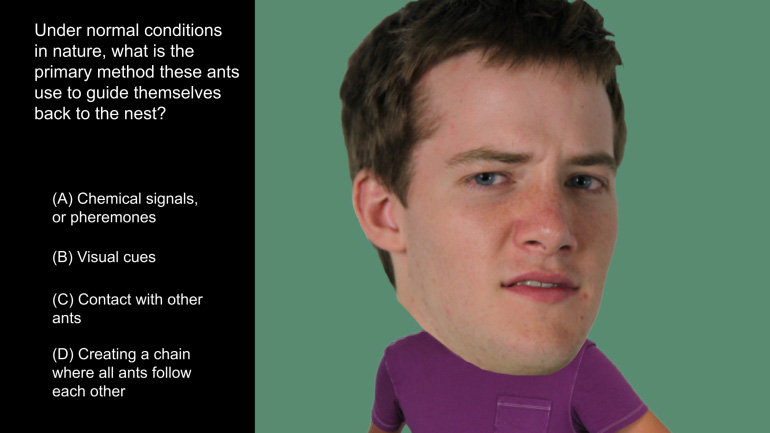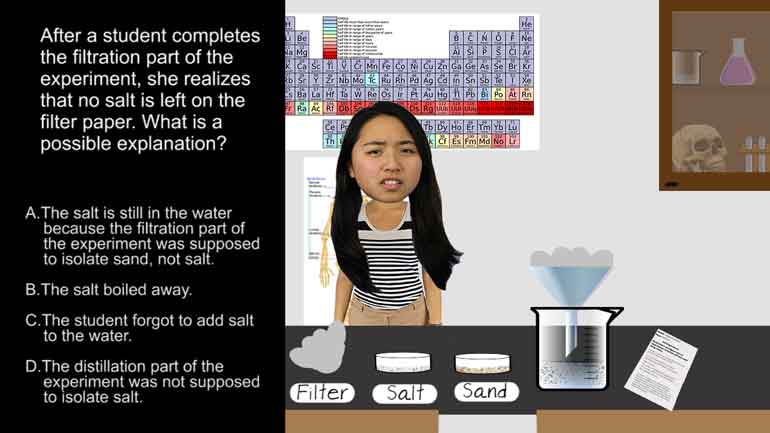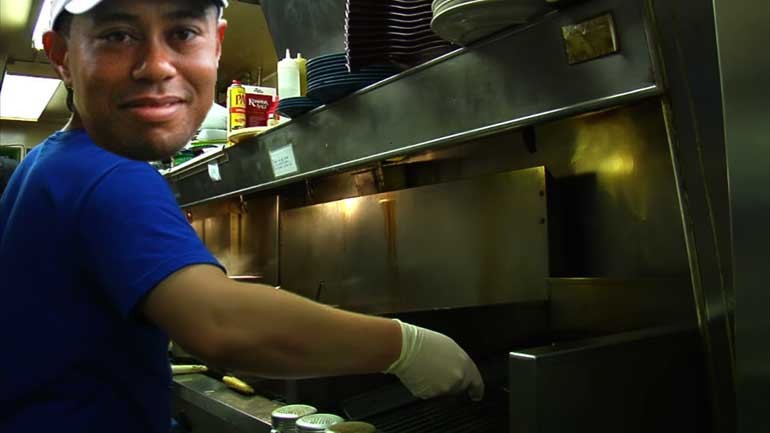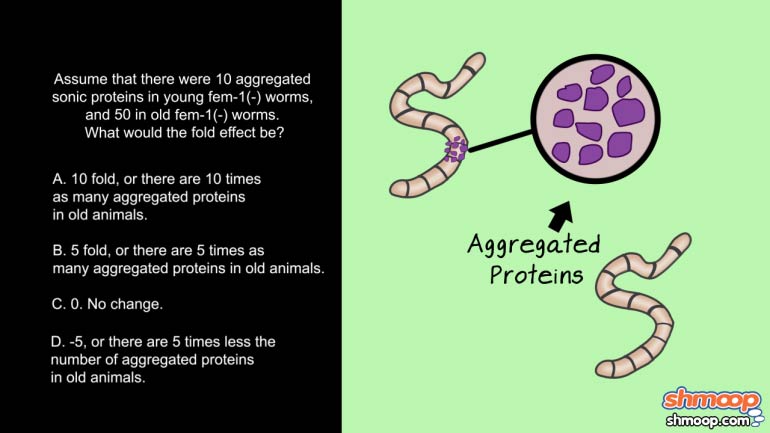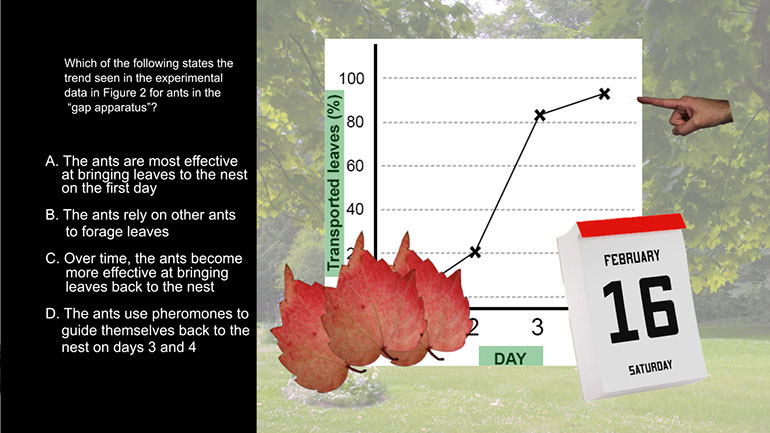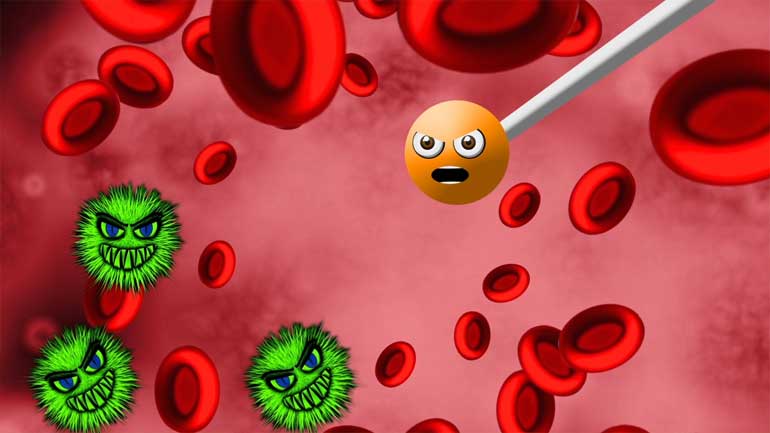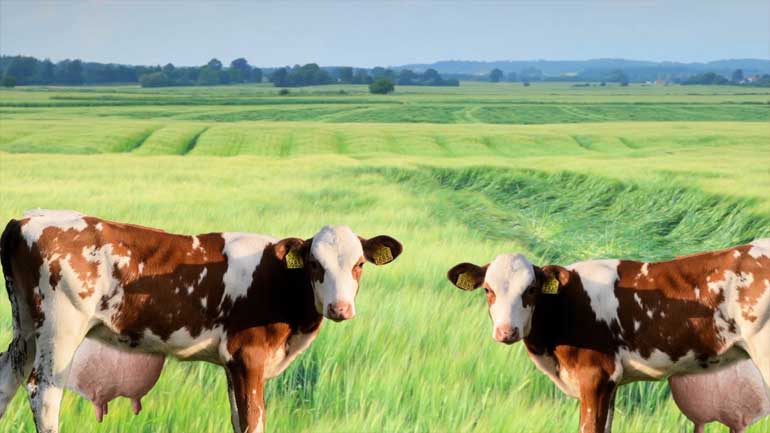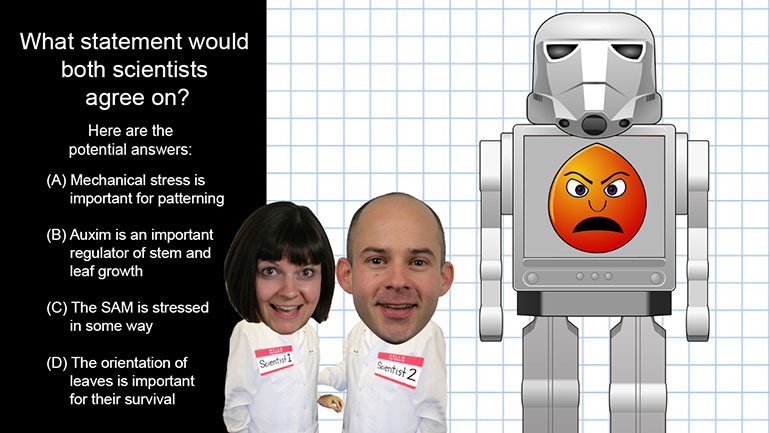ShmoopTube
Where Monty Python meets your 10th grade teacher.
Search Thousands of Shmoop Videos
Biology EOC Assessment Videos 41 videos
In this video from our course on molecular genetics, learn all about animal cloning.
In this video from our course on molecular genetics learn all about the nucleus.
AP Biology: Evolution Drives the Diversity and Unity of Life Drill 1, Problem 1. The first cells on planet Earth were likely what?
Dancing Bees 211 Views
Share It!
Description:
ACT Science 1.9 Research Summary Passage. If the air was the same near the bees that were dancing and the bees that weren't, what would the scientists have to conclude?
Transcript
- 00:03
Here’s your Shmoop du jour, brought to you by sticky hair.
- 00:07
And what creates sticky hair?
- 00:09
Honey combs.
- 00:11
Here’s a passage about an experiment performed on the communication of honey bees.
- 00:21
If the air was the same near the bees that
Full Transcript
- 00:23
were dancing and the bees that weren't, what would the scientists have to conclude?
- 00:28
Here are your potential answers…
- 00:34
Well, we know how the samples turned out—
- 00:35
the air was different on the dance floor than it was in other parts of the hive.
- 00:39
This question is asking us something interesting, though: If the samples of air looked the same,
- 00:44
what would that mean?
- 00:46
Option A—There is no chemical signal generated by the waggle dance.
- 00:50
That wouldn’t necessarily be true.
- 00:52
An absence of evidence is not always evidence of absence; it just means we didn’t pick it up.
- 00:57
Option B—Both air samples contain the waggle dance chemicals.
- 01:01
We can’t confirm that. With two similar samples, we can’t definitively tell if they
- 01:05
both contain waggle dance chemicals, or if neither of them do.
- 01:09
The great thing about the actual results is how they showed clear evidence.
- 01:13
Two similar samples just won’t cut it.
- 01:15
Option C—They could not find evidence of
- 01:18
a chemical airborne signal generated by the waggle dance.
- 01:20
Hey, now THAT sounds scientific!
- 01:23
“Could not find evidence” is very important;
- 01:26
it’s simply declaring the result of their experiment. It’s not making any claims about the bees,
- 01:30
their dancing, their smells, or their behavior.
- 01:32
It’s simply saying, “We didn’t find evidence,” which would be absolutely correct.
- 01:37
Just to be sure, let’s take a look at D…
- 01:39
“The bees must be singing instead of dancing,
- 01:42
because there’s no chemical signal.” That’s absolutely not true.
- 01:46
You can’t suggest that something is singing just because it doesn’t smell,
- 01:50
unless you’re talking about Uncle Ronnie, who is always singing in the shower…
Related Videos
ACT Science: Conflicting Viewpoint Passage Drill 1, Problem 1. What statement would both scientists agree upon?
ACT Science: Research Summary Passage Drill 2, Problem 1. Why do you think that the filter paper will not remove the salt from the water?
ACT Science Data Representation Passage: Drill 3, Problem 5. According to Figure 2, what birth date will be predicted for an individual actual...
ACT Science: Data Representation Passage Drill 1, Problem 2. Which of the following is a variable in Figure 1, but not in Figure 2?
ACT Science: Data Representation Passage Drill 1, Problem 1. What do the statistics in Figure 1 suggest?
